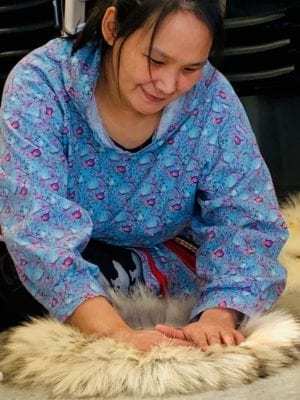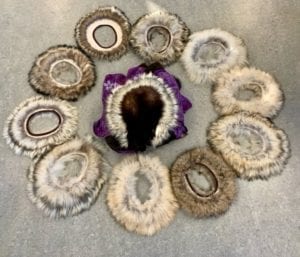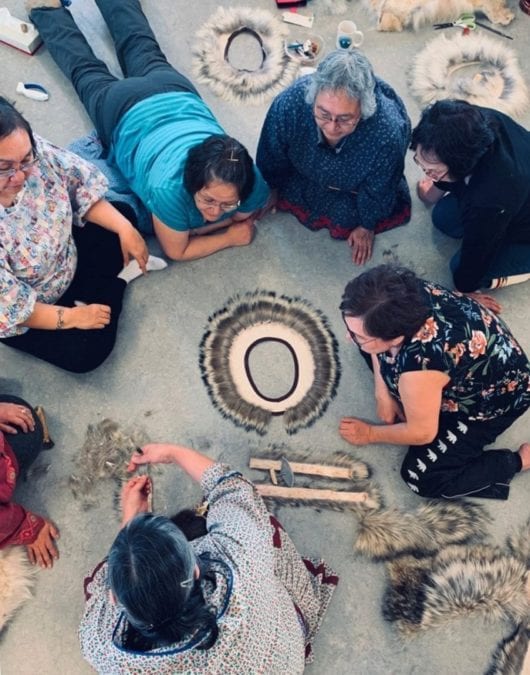A dozen women recently gathered at the Cambridge Bay Elders' Palace to reclaim a Kitikmeot Inuit tradition of making wolf-fur coverings that go around the wearer's face, and it was an emotional experience.

Karen Kamoayok, one of the workshop participants, said her mother used to craft puhitaqs, an Inuinnaqtun word meaning "sunburst."
"A lot of memories of my mother came back," Kamoayok said. "I had no patience at all to watch her sew, so that made me feel bad. Now that she's gone I had to learn it from other people. That was amazing and, at the same time, it sure touched my heart."
Clara Evalik, who organized the workshop, also used to watch her mom meticulously fashion puhitaqs, but she never picked up the skills back then. Figuring it's not too late, Evalik organized the Feb. 27 to March 2 workshop, sponsored by the Kitikmeot Inuit Association.
"I knew that if I wanted to learn, I'm sure there were many other women that wanted to learn," she said, recounting that she found her mom's supply of fur in a bag after her mom moved into a care centre.
"It had all these strips already cut out, ready to be prepared for a sunburst," said Evalik. "To me, it was a sign that I really have to have a workshop such as this."
Instructor Agnes Panioyak travelled from Kugluktuk, and a couple of other participants came from Inuvik.

"It was an amazing workshop. All of us women there were learning how to make the product we had never made it before so it was an emotional healing journey for a lot of us," Evalik said.
"At the end, we were able to create a product that we always wanted to make. The pride in the culture and tradition was so obvious throughout the whole week."
It took almost nine months to acquire the wolf skins from hunters in Cambridge Bay and Kugluktuk.
Pelts were needed from wolves harvested between fall and winter because the fur had to be thick and not from a period when the animals were shedding, Evalik explained.
Many narrow strips of wolf hide are affixed to a canvas, creating a circular garment with a hole for the face. The puhitaq attaches to a parka hood, acting as a wind break and providing the wearer greater warmth.
"It's such a delicate craft," said Evalik.
For that reason she had to choose experienced seamstresses while numerous others who wanted to take part in the workshop weren't accepted because there weren't enough hides.
Evalik's hopeful there will be similar workshops in the future, however.
"People are so interested in what we have done. I hope we continue to do more projects like this," she said. "We live a modern way of life but we love our culture and traditions as well."
Kamoayok said taking part in the event made her realize how much work her mother did for her over the years, repeatedly making new parkas and puhitaqs.
"I'm going to try to keep it going and teach my girls how to do them," she said.
